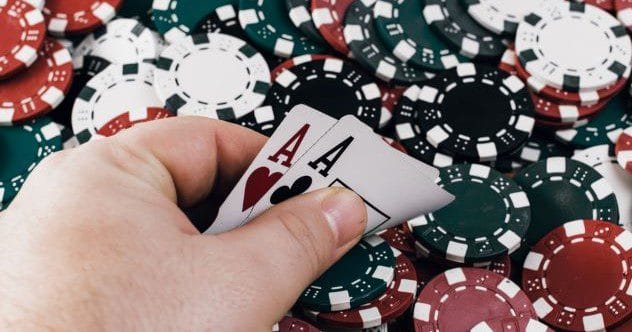Gambling. The word itself can conjure images of bright lights, cheering crowds, or perhaps a quiet, intense game of cards. It’s a pastime that’s more popular than ever, especially with online sports betting now just a click away. You can easily bet on your local team or one from across the globe. While it’s a risky activity that should always be done moderately, its global appeal is undeniable.
But have you ever wondered how old gambling truly is? While modern apps make betting seem new, the act of wagering on chance is ancient. Seriously ancient. Get ready to have your mind blown as we dive into ten fascinating facts about the long, surprising history of gambling and how it evolved into the phenomenon we know today!
10. Gambling’s Ancient Roots Go Way Back
When we say gambling is old, we mean really old. Archaeologists have found evidence of simple games of chance dating back to ancient Mesopotamia, around 3000 BC. They’ve dug up six-sided dice-like objects from that time. This shows that people were rolling dice and trying their luck on some early form of game.
Experts believe gambling was common even before then, likely for thousands of years. We just haven’t found the proof because it’s too old. What we do know is that Mesopotamians often gambled as a way to seek divine guidance or understand mysterious omens. Many ancient games of chance had religious or spiritual meanings. For example, the Egyptians played a game called “Senet.” This game was not just about luck and fun. It was also a way to see if the gods and fate were on their side. It was like a mix of gambling and fortune-telling!
9. Ancient China: Dice, Dominoes, and Early Chess
While Mesopotamians might have had dice games around 3000 BC, ancient Chinese dynasties were not far behind. Dice games in China were recorded as early as 2300 BC. That’s a few hundred years after Mesopotamia but still way ahead of most of the world.
Then, during the Xia dynasty (roughly 2070 BC to 1600 BC), gambling became incredibly popular throughout China. At that time, gambling was known as “bó.” It quickly became a favorite pastime for working Chinese people looking for a bit of fun. Legend says an ancient general and court official named Wu Cao invented bó.
The most popular game was a chess-like setup with a board and 12 pieces, called “liùbó.” Although its exact rules are lost, ancient Chinese texts mention the game and its competitive nature. Some historians think liùbó might have been an early version of chess. This game was so popular and lasted so long that the Chinese character for it eventually came to mean all types of gambling.
8. Roman Casinos: Taverns of Chance
The ancient Romans were avid gamblers. They gambled in private with friends and in public places. These public settings, known as “tabernae ludi” or “tabernae aleatoriae,” were quite interesting. They were taverns or public houses set up specifically for betting on games, playing dice, and other contests of skill and luck.
Think of these like early versions of casinos, just not as grand as modern Las Vegas and without slot machines! Gambling was a pastime for almost every class of Roman. Nobles and commoners, old and young, all enjoyed these games. Children even made up their own secret dice games. Soldiers, as you might expect, loved to gamble often.
Technically, only men were allowed to gamble. However, women found ways to play too. During the annual Bona Dea festival, women were permitted to gamble openly. Today, you can still see engraved game boards at ancient Roman sites like the Colosseum and the Forum. These Roman “tabernae” slowly evolved into our modern idea of a casino, laying the groundwork for what we see today.
7. India’s Ancient Epics Warn Against Gambling
Two famous ancient Indian epics, the Mahabharata and the Ramayana, describe gambling in detail. One notable story from the Mahabharata involves a game of dice that went terribly wrong, leading to serious consequences. This tale serves as one of the earliest recorded warnings about the dangers of betting.
This cautionary story is found in the “Sabha Parva,” the second book of the Mahabharata. In it, King Yudhishthira has a major weakness: gambling. A character named Shakuni, encouraged by another troublemaker, tempts Yudhishthira into a dice game. Knowing Yudhishthira can’t resist, Shakuni keeps pushing him to bet more and more. Eventually, King Yudhishthira loses everything, including his kingdom, and is forced into exile in complete shame. What a powerful warning about the risks of gambling!
6. The Emergence of Playing Cards
The first playing cards are widely believed to have originated in ancient China. They were produced and distributed to Chinese gamblers sometime in the 9th century AD, during the Tang Dynasty. This makes sense because China had advanced paper-making and printing technology.
The Chinese also had a popular gambling game called “the leaf game,” which used paper cards. Historians aren’t sure of the exact rules, but many think it was more like dominoes than modern card games. By the 10th century AD, Emperor Mu-Tsung himself was known to use playing cards for gambling.
Playing cards didn’t reach Europe until around the 14th century. They likely arrived either through Islamic Spain or via trade between Egypt’s Mamluk people and the Italians. By this time, cards with suits and royalty figures, much like we use today, were already established. This suggests the concept was perfected in India or the Middle East before spreading to Europe.
5. The Birth of the Lottery for Public Good
In medieval Europe, governments in the Low Countries (modern-day Belgium and the Netherlands) used lotteries to raise money for public projects. These funds helped build bridges, canals, and even town fortifications. Lotteries then worked much like they do today: people bought tickets for a chance to win prizes, and the money raised went into public funds.
These lotteries were popular from their introduction in the mid-15th century. People liked that the money helped improve their towns. For example, a record from May 1445 in L’Ecluse shows the local government raising funds to build walls. Over 4,300 tickets were sold, with total prize money reaching about $170,000 in today’s currency! The Netherlands also led the way with national lotteries, often to help the poor. The Dutch “Staatsloterij,” founded in 1726, is the oldest continuously running lottery in the world. Even the English word “lottery” comes from the Dutch word “lot,” meaning “fate.”
4. Tarot Cards: From Gambling Game to Fortune Telling
Before tarot cards became associated with fortune-telling, they were just playing cards used for gambling! Today, tarot cards are commonly linked to the occult, used by readers to supposedly predict the future. But that’s not how they started.
In the late 16th and early 17th centuries, tarot cards were printed for use in card games. Each card had a different image, making them popular in various games in France and Italy. Players would wager money based on the tarot cards they were dealt. It wasn’t until the 18th century that their purpose began to shift. With their unique images, tarot cards slowly transitioned into tools for soothsayers. While their divination use is what’s known today, for their first couple of centuries, they were simply a gaming tool!
3. Poker’s Wild Journey West
Poker, as we know it, was invented in the United States in the early 19th century. Historians believe it took root in New Orleans sometime between 1810 and 1825. From there, it spread rapidly across the country, especially westward with pioneers, cowboys, and gold seekers.
During the American West’s golden age in the 19th century, gambling was widespread. Saloons everywhere featured poker games. As people moved around, they took the game with them, teaching others how to play. A significant development was the Chinese Exclusion Act of 1882. Chinese immigrants who remained were forced into underground economies, often opening discreet poker dens. These became popular, further spreading the game. Eventually, poker became a staple, landing in Las Vegas in 1967, with the World Series of Poker starting a few years later.
2. The Slot Machine Spins into Popularity
The very first mechanical slot machine was invented by Charles Fey in San Francisco near the end of the 19th century. Around 1895, he introduced his creation, “The Liberty Bell.” It was a simple machine with three spinning reels, each painted with symbols like diamonds, spades, hearts, and a cracked liberty bell.
People soon nicknamed it “The One-Armed Bandit,” a term still used today. Early slot machines offered simple payouts. Many used fruit symbols like cherries and melons. Winning these symbols might get you cherry-flavored chewing gum! It sounds innocent, but these early machines laid the foundation for the slot machines that are now a fixture in casinos worldwide.
1. Gambling Goes Digital: The Online Revolution
Like many industries, gambling was eager to expand online in the late 20th century. One of the first online casinos, “The Gaming Club,” launched in 1994, catering to the small number of internet users at the time. As internet use exploded, more casinos followed. InterCasino, launched in 1996, became a major early player.
The early days of online gambling were like the Wild West—completely unregulated. Governments were slow to create rules for this new digital frontier. Seeing an opportunity, several Caribbean nations jumped in. In the late ’90s, Antigua and Barbuda passed the first-ever online gambling legislation by a sovereign nation. This attracted online gambling companies, leading to the birth of the “offshore betting” market, forever changing how people access and participate in gambling.
From ancient dice to digital bets, the story of gambling is a long and fascinating one, deeply woven into human history. It has evolved from simple games of chance with spiritual undertones to sophisticated global industries accessible from our fingertips. Each era added its own layer, from Roman taverns and Chinese playing cards to medieval lotteries and the invention of poker and slot machines. The journey continues, with technology always paving new ways for this ancient pastime.
What part of gambling history surprised you the most? Share your thoughts in the comments below!










